11v11 Formations
Jump to: 4-3-3 | 4-4-2 | 4-2-3-1 | 3-5-2 | 3-4-3
Anyone involved in playing, watching or coaching football (or playing FIFA!!!) is going to have a decent familiarity with 11 a side formations. Because of this, it's very easy to reference player roles and responsibilities with your players by using real world examples. "Watch the movement of Barcelona's front three" insantly gives your three forwards in a 4-3-3 formation a reference they'll understand and can relate to. Getting your CDM to look at Busquets' role in the Barca team again gives the player a relevant reference they can learn from.
There are plenty of resources out there (we've included some with each formation below) that cover the ins and outs of the various different options you have and the roles of the different players within each system, so we aren't going to get into that here. You may find this article from FourFourTwo magazine useful as an introduction - it covers some of the key points / strengths / weaknesses of different formations quite well...
We've listed a few of the more common formations below, but first, one thing that seems to occupy a lot of coaches' thoughts when they move to 11 a side:
A Back 3 or a Back 4?
I heard this a LOT when we moved to 11 a side. A large number of teams had spent the 9 a side period playing with a back 3, so the advantages of sticking with something the players were used to was obvious in terms of the transition for the players to a new format. But, you are obviously moving to a larger pitch, with more opposition players too, so covering that space and dealing with the extra attacker(s) with just 3 defenders is tough, unless you have wing backs who are seriously athletic and able to provide the extra cover required in wide areas.
Personally, my preference was for a back 4 at U13, because our players were quite small and so for the pitch size, generally didn't have the athleticism to cover defensively with a back 3. We tried it, but we just couldn't cover the ground. With the exception of one side, who had the players to pull it off, the teams we saw playing with just 3 defenders at U13 tended to leave a lot of space in the wide defensive areas that our wingers could take advantage of. As the players get older and taller, covering the space with 3 defenders is more of an option. But - look at your own players and decide. It can't hurt to try it and of course, having a default but getting players used to different systems gives you the flexibility to change mid-game if the course of the match requires it.
The 4-3-3 Formation
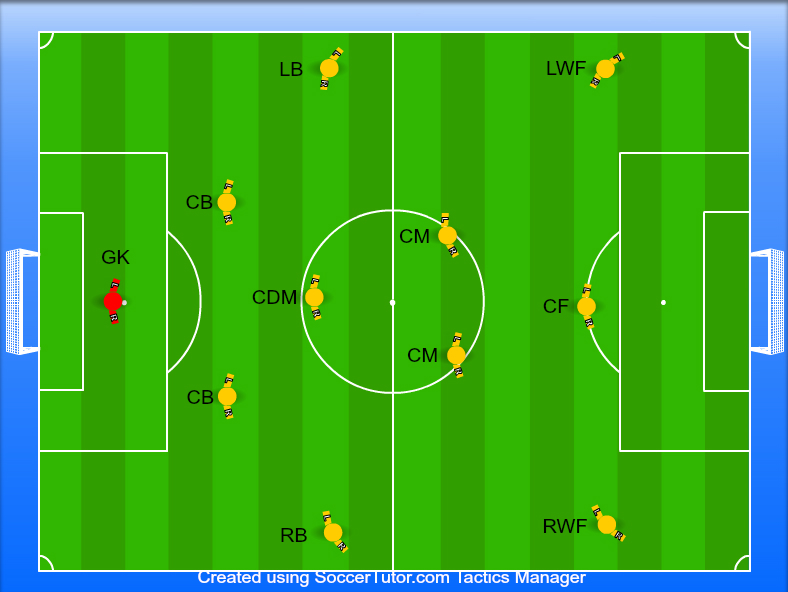
More Info on the 4-3-3 Formation (3rd party links):
- https://www.thecoachingmanual.com/blog/5374133663694848
- http://www.elitesoccerconditioning.com/4-3-3/433basics.htm
--------------------------------------
The 4-4-2 Formation
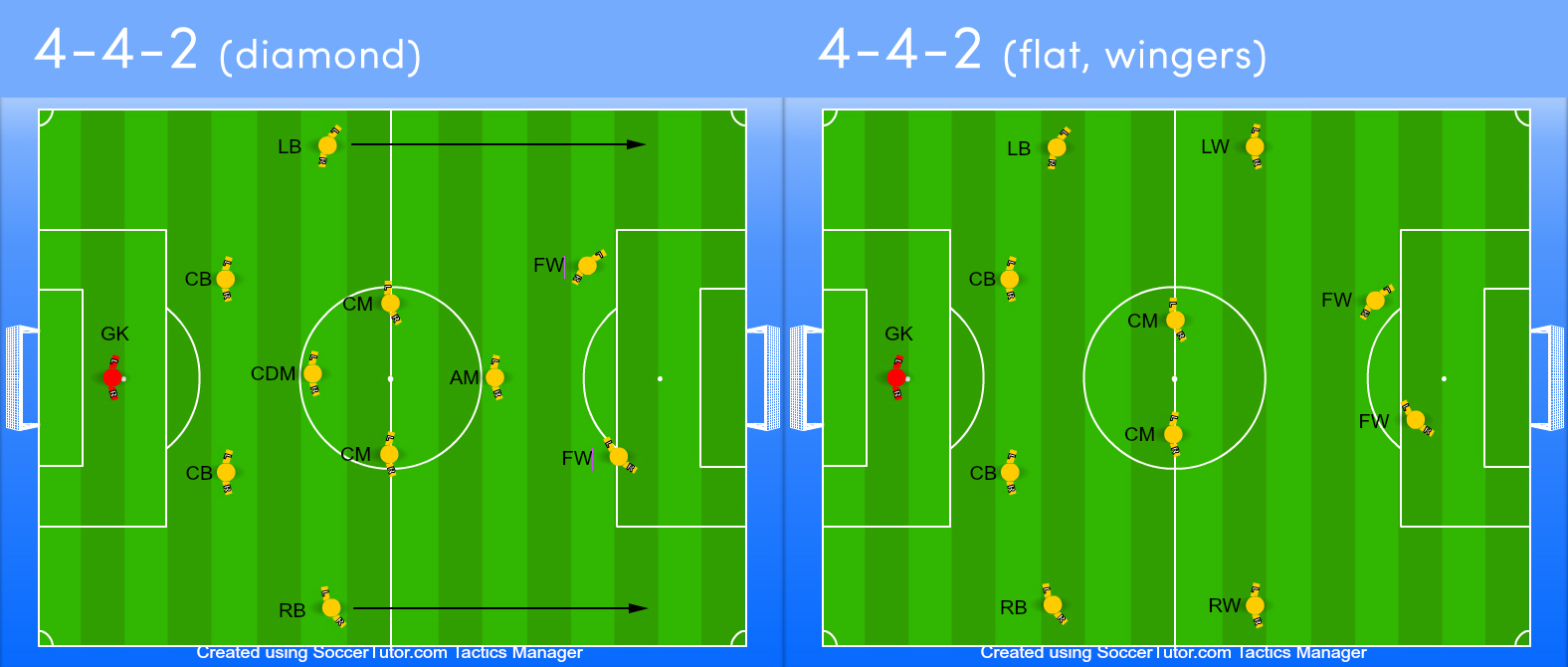
There are a whole bunch of alternate versions of the 4-4-2. Two of the most common are shown above, involving either a flat midfield 4 including wingers, or a diamond midfield, with the width provided by attacking full backs.
More info on the 4-4-2 formation:
- https://thecoachingmanual.com/blog/5776153340018688
- http://www.skysports.com/football/news/11095/10107074/why-is-4-4-2-thriving-is-it-the-key-to-leicester-and-watford8217s-success
--------------------------------------
The 4-2-3-1 Formation
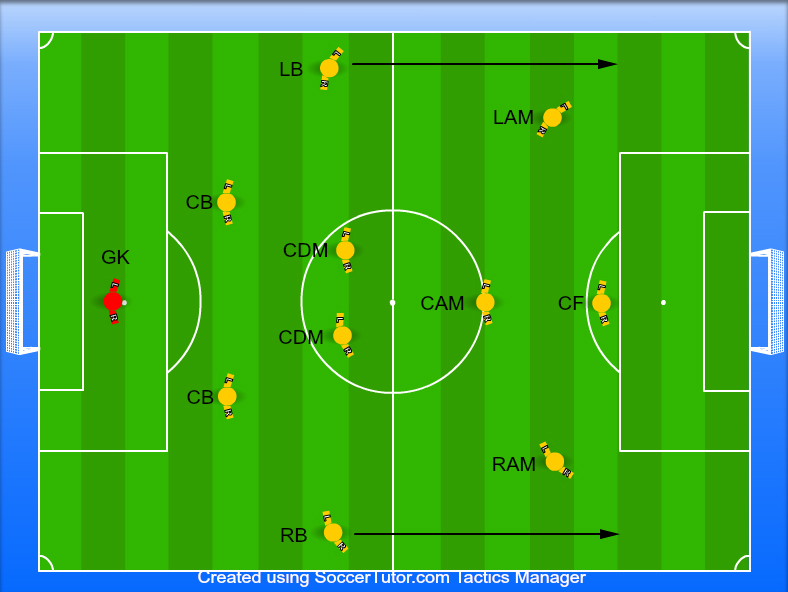
More info on the 4-2-3-1 formation:
- https://www.thecoachingmanual.com/blog/4932782824357888
--------------------------------------
The 3-5-2 Formation
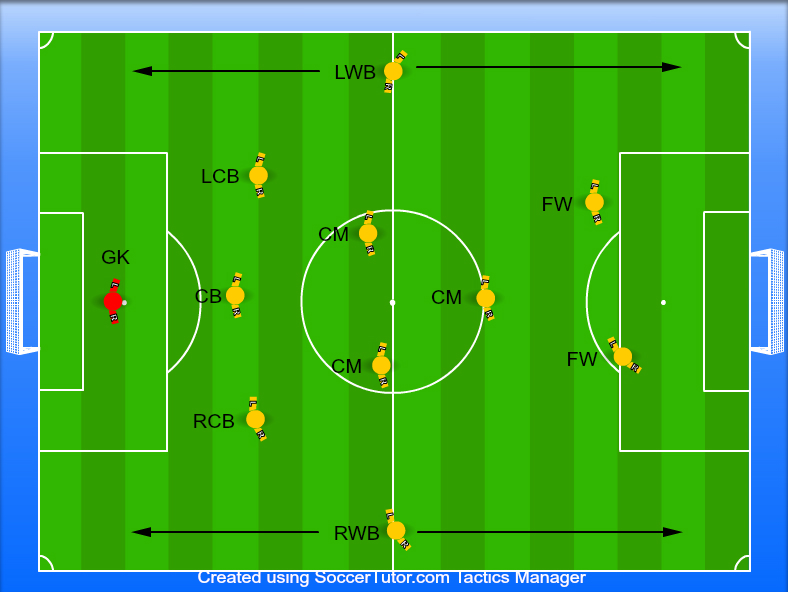
More info on the 3-5-2 formation:
- https://www.fourfourtwo.com/features/football-tactics-explained-most-common-formations-and-how-beat-them?page=0%2C4
- coaching attackers in a 3-5-2: https://www.thecoachingmanual.com/content/4850214225575936
--------------------------------------
The 3-4-3 Formation
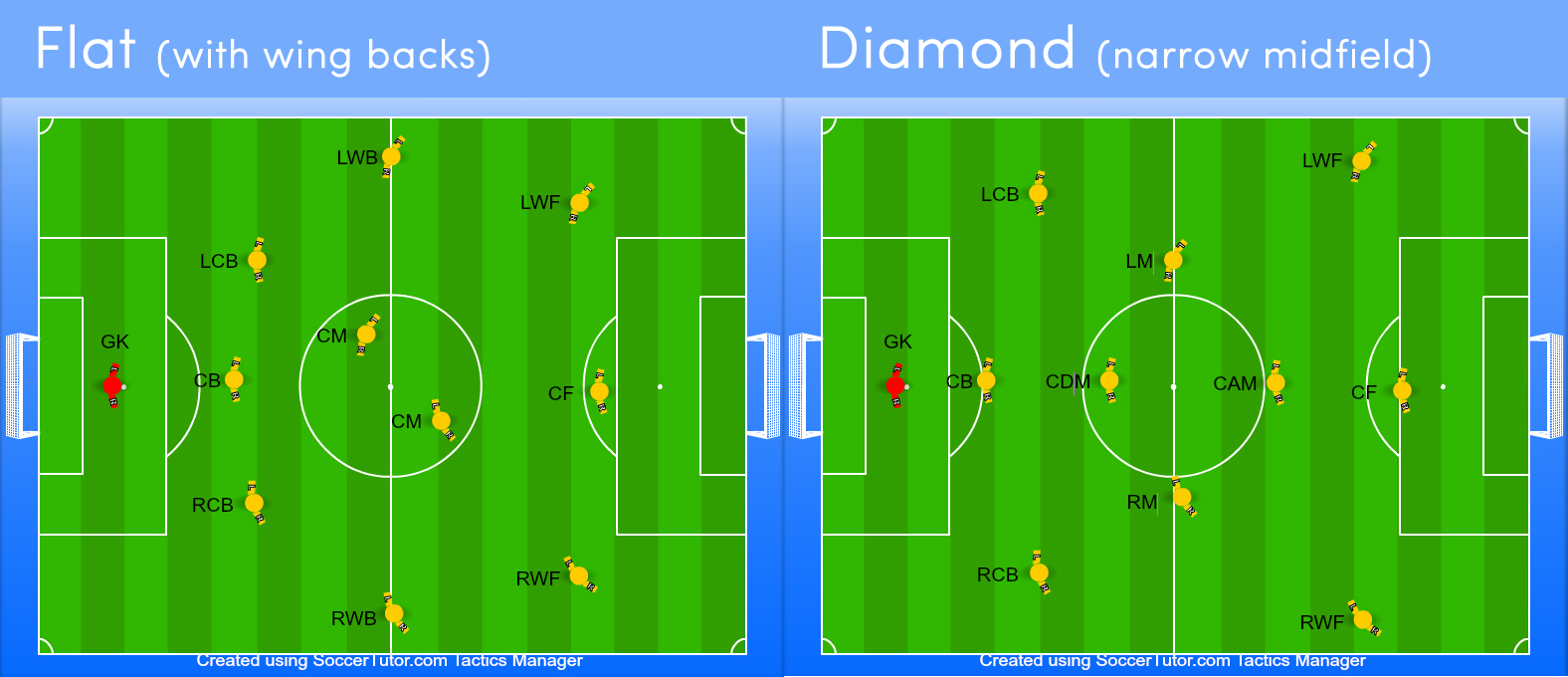
More info on the 3-4-3 formation:
- http://www.elitesoccerconditioning.com/3-4-3/the3-4-3.html
- https://www.thecoachingmanual.com/blog/4862850019360768